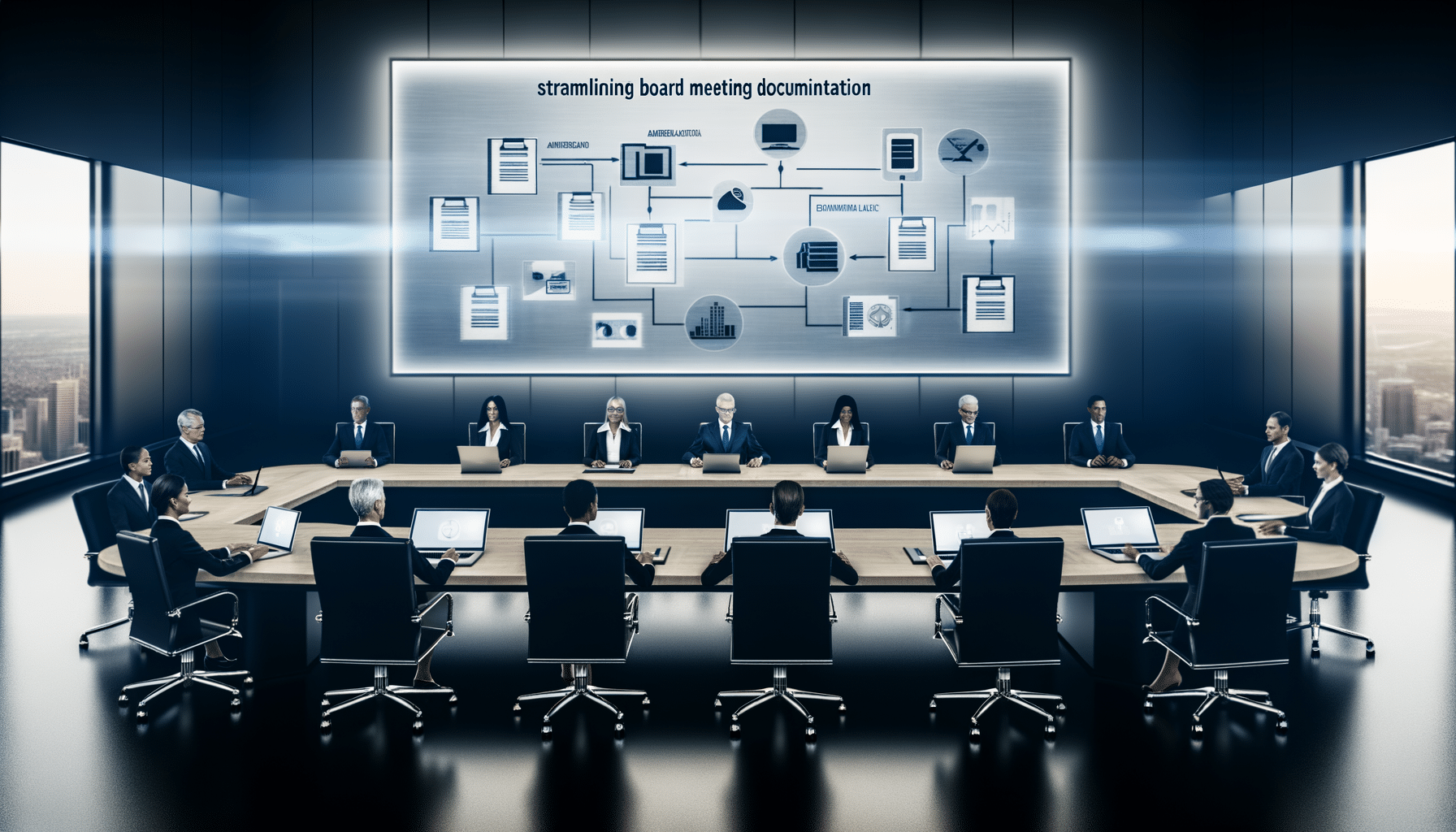Introduction
In the fast-paced world of corporate governance, board meetings are crucial to an organization’s decision-making process. Effective documentation of these sessions is vital to ensure transparency, accountability, and rigorous follow-through on the resolutions passed. As someone who has been navigating the intricacies of record management for years, I understand the roadblocks faced by many legal and compliance heads, especially when it comes to maintaining precise board meeting records. Today, I delve into efficient ways that can be employed to streamline board meeting documentation seamlessly.
The Need for Streamlined Documentation
Board meetings are the backbone of strategic planning and organizational oversight. However, the resultant documentation often ends up being a cumbersome chore. Let’s explore why streamlining this documentation is no longer optional but a necessity.
Simplifying the Process: Automation with AI
Efficient recordkeeping solutions like RecordsKeeper.AI are revolutionizing how we handle board meeting documentation with their advanced AI capabilities.
Automated Categorization:
The AI algorithms can swiftly classify meeting topics—assigning tags and categories automatically—streamlining retrieval and reference. This ensures you can easily navigate through documentation without sifting through endless piles of paper or digital files.
Natural Language Processing:
Thanks to AI’s natural language parsing, drafting meeting minutes becomes more intuitive. The system can comprehend nuances in discussion and integrate them logically, reducing the manual effort involved in transcribing discussions.
Enhancing Security and Compliance
Managing sensitive data from board meetings necessitates stringent security protocols to prevent unauthorized access and ensure compliance. Here’s how incorporating a robust solution can help.
Secure Data Rooms:
Create virtual data rooms where you can safely store meeting documentation. These vaults offer controlled access, encrypted communication, and real-time monitoring—guaranteeing data privacy.
Compliance Management:
Leverage automated workflows to uphold compliance effortlessly. Whether adhering to national regulations or international standards like GDPR, HIPAA, and SOX, automated compliance management ensures your organization remains audit-ready.
Backup and Recovery: Protecting Critical Data
The risk of losing critical board meeting records can be daunting. Structured backup systems alleviate such concerns.
A Seamless Future
The future of board meeting documentation lies in its digitization and automation. As we harness the power of AI and other revolutionary technologies, the path becomes clearer. Picture a scenario where minutes are seamlessly compiled, accessed, and interpreted, enhancing the effectiveness of your board meetings and enabling your organization to pivot strategically.
As we close this exploration of optimizing board meeting documentation, I urge you to envision a world where documentation no longer hinders but equips you with true strategic advantage. Streamlined processes can free up your focus for strategic decisions and lead your organization towards unprecedented growth.
Conclusion
In the era of digital transformation, efficiently managing board meeting documentation is both an art and a science. By leveraging innovative technologies like AI-driven automation and real-time data management, the daunting task of documentation can become a strategic asset. I hope these insights guide you to rethink and refine how your organization approaches its documentation practices, transforming it from a tedious obligation to a streamlined, empowering process.
For more insights and stories from my entrepreneurial journey, feel free to follow my updates here. Remember, the future of record management is already here with RecordsKeeper.AI—embrace it and lead the way!








